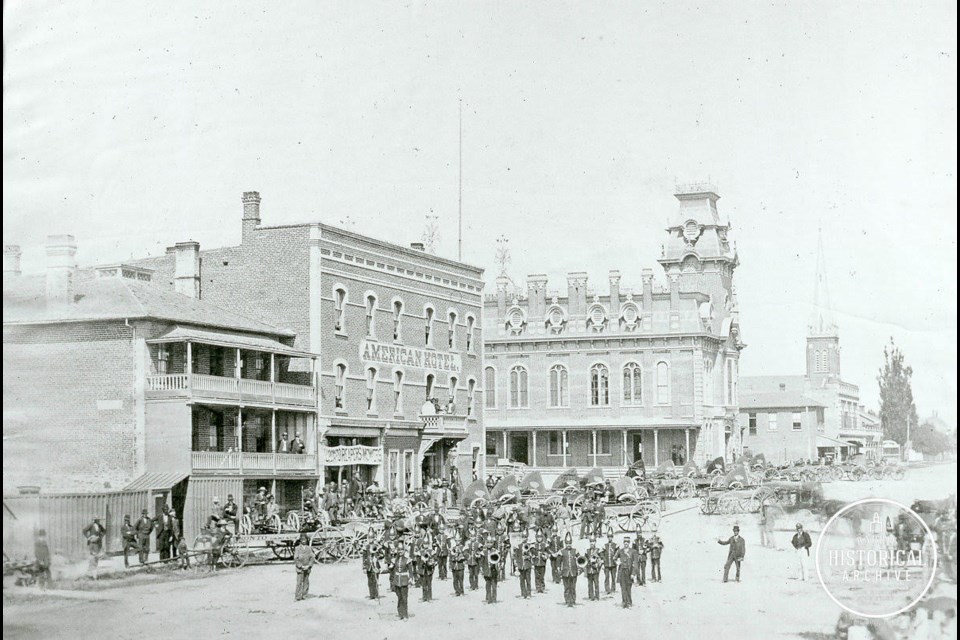The crime was called ‘The Innisfil Murder’, and the trial was christened ‘Battle of the Giants’ by the press, as a reference to the two heavy hitters in the courtroom – legal legends Colin McDougall and D’Alton McCarthy. The saga began when school children walking to class discovered an abandoned horse and cart on the side of a rural road. It contained the badly beaten body of a grey-haired man. That man was dead.
The lifeless man was Thomas Slight, an English-born farmer of about 66 years of age, who had a homestead near the almost forgotten hamlet of Pinkerton, six miles from Cookstown. He was a widower who lived alone and occupied himself with growing a bit of fruit and vegetables to sell.
On his last day on Earth, Thomas took a load of produce to Barrie. He had in his wagon some apples, potatoes and other produce, and some cheques to cash in his pocket. It appears that he got to the bank and left that establishment with $80. He managed to sell his produce, so he likely had additional cash with him when he left for home.
That day was Nov. 17, 1881. Nothing more would be known, until a trial in May of the following year, about what happened in the intervening hours between his last sighting in Barrie and the discovery of his body on a lonely Innisfil sideroad.
Thomas was well-known in Barrie. He was described as friendly, gentle and unassuming – just a country gentleman who enjoyed his small farm and also his marketing trips to Barrie. So, many residents recalled seeing him on his way out of town, at various times and points. Some recalled seeing him alone, while others saw him with a passenger. A few believed they could identify that passenger.
Perhaps the first to suggest a name was James Hambly, who was also a farmer, and who knew both Thomas Slight and the alleged killer, William Ney. James believed he saw Thomas pass in his wagon, about 4 p.m. that afternoon, accompanied by William Ney, a young man who lived not far from the Slight farm. It would be quite natural to give a neighbour a lift home again.
Young William was not a known trouble magnet, but some minor events during his visit to Barrie gave rise to lots of talk, which eventually made its way into the courtroom as witness testimony. He had spent some nights in the Summersett (later Wellington) Hotel, and done a little shopping while in town. He purchased a shirt, then returned it. He pawned his overcoat to pay his hotel bill, but then bought a drink, which left him short. William left town without settling with the hotelier, which led to the idea that he had money troubles.
It can be seen how a penniless farm boy might become a suspect if he was the last known companion of a murdered man, who was found with any empty wallet. His sudden ability to repay a loan of $18 to his elder brother that day was another red flag. William Ney was arrested and taken to the Barrie Jail.
Was William Ney a killer? He was described by those who knew him in very kind terms, equal to how the dead man was remembered. Most folks knew both men and had difficulty imagining either one hurting the other. But someone had brutally dispatched Thomas Slight.
The scene that was unfortunately found by children that cool November morning was not a pretty one. A cap lay on the road a little bit north of the wagon, which seemed to suggest that Thomas was first struck there. The wagon tracks were less than straight after that, and goods from the box, including straw, jars and wooden axe handles were strewn along the way. Where the horses stopped, blood was pooled, and inside the wagon was a very dead man with a crushed skull. The obvious murder weapon, found south of the scene, was a bloody axe handle with grey hair clinging to it.
Each week, the Barrie Historical Archive provides BarrieToday readers with a glimpse of the city’s past. This unique column features photos and stories from years gone by and is sure to appeal to the historian in each of us.



